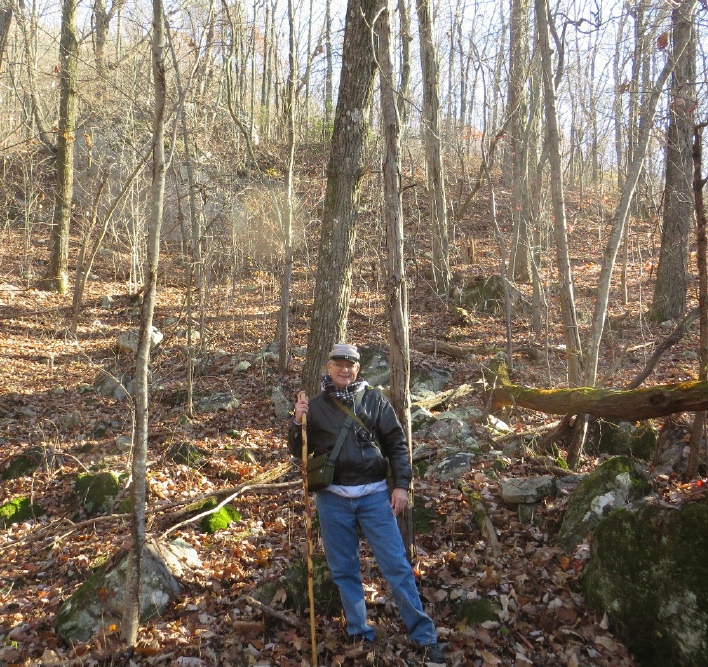|
BATTLE OF LOOKOUT
MOUNTAIN
ORGANIZATIONAL
TABLE
NOVEMBER
24TH, 1863
CONFEDERATE
FORCES
Maj.-Gen. Carter L. Stevenson
General
Stevenson took over command from Lt-Gen Hardee at night on November
23rd. When he arrived, General Stevenson was in command of
approximately 9,000 men in two divisions: Stevenson's Division
and Cheatham's Division, temporartily commanded by Gen. John K.
Jackson. Walker's Division had just moved over to
Missionary Ridge and Cheatham's Division replaced it. Soon,
General Bragg began taking away more units and Stevenson was left with
one
division of approximately 3,000 men to defend a 3-mile long front of
rugged terrain.
[A] Brig.-Gen. John K. Jackson's Division -
remained on top of Lookout Mtn
(1) Brig.-Gen. Edward C. Walthall's Brigade - 1500
strong.
24th Mississippi - Col. Wm F. Dowd #
27th Mississippi - Lt.-Col. A. J. Jones
29th Mississippi
- Col. William F. Brantly
30th Mississippi - Major James M. Johnson
34th Mississippi - Col. Samuel Benton
One third were skirmishers along Lookout Creek north of railroad
bridge. Main body's right next
to Craven's House and
extended 1/4 around West slope of Mtn.
(2) Brig.-Gen. John C. Moore's Brigade - 1200 strong.
37th Alabama - Col. J. F. Dowdell
40th Alabama - Col. John H. Higley
42nd Alabama - Lt-Col. Th. C. Lanier
Skirmishers along Tennessee River from Lookout Creek to Chatanooga
Creek. Main body
on
Northern slope below Craven's House.
(3) Brig.-Gen. Edmund W. Pettus' Brigade- Top of Lookout Mtn.
20th Alabama - Capt. John W. Davis
23rd Alabama - Lt-Col. J. B. Bibb
30th Alabama - Col. Charles M. Shelley
31st Alabama - Col. D. R. Hundley
46th Alabama - Capt. Geo. E. Brewer
Two regiments were on top of the mountain and two
(4) Brig.-Gen. John C. Brown's Brigade- Top of Lookout Mtn.
3rd
Tennessee - Col. Calvin H. Walker
18th and
26th Tennessee
- Lt-Col.
William R. Butler
32nd Tennessee - Capt. Thomas D. Deavenport
45th Tennessee & 23rd Tennessee Battalion - Col. A. Searcy
(5) Brig.-Gen. Alfred Cumming's Brigade
(6) Brig.-Gen. Jackson's Brigade
Artillery
Howell's Georgia Battery, 1
Section - 2nd Lt. R. T. Gibson -
At the front steps of the Cravens House - 2 X 6-Lb
Cherokee Artillery -
Capt. Max Van Den Corput 4 X
Fired down from top of mountain.
Garrity's Alabama
Battery - Capt. James Garrity
Located on top of mountain for a month but was removed on Midnight of
November 23rd.
Reinforcements - arrived late
Clayton's Brigade - from Breckingridge's corps, commanded
by Col. J. T. Holtzclaw
Relieved Walthall's brigade at 8pm.
18th AlabamaTennessee
- Maj. Shep Ruffin
32nd AlabamaTennessee
- Capt. John W. Bell
36th AlabamaTennessee
- Col. Lewis T. Woodruff
38th AlabamaTennessee
- Col. Charles T. Ketchum
58th AlabamaTennessee
- Lt-Col. John W. Inzer
UNION
FORCES
Maj-Gen. Joseph H. Hooker - Army of Potomac
Due to movement of the troops
under the eyes of the Confederates on Lookout Mountain, the Union
troops that in
position south of the Tennessee River consisted on one division from
each of the three armies under General Grant. Grant decided to
halt the transfer of trops due to the rising river and leave the
units there with General Hooker. He ordered Hooker to
make a reconnaissance probe to Lookout Mountain and allowed him to use
his
discretion about advancing or attacking it. The Union Division
out-numbered the Confederates by 6:1, with a large portion of the
Confederate troops not engaged in the battle.
General John Geary's division lead the attack. He ordered his division
across Lookout creek
about 3 miles South of the Tennessee River. They formed a column
that stretched from the cliff face below the top of Lookout Mountain and
stretched down to Lookout Valley. Whitaker's Brigade of Cruft's
Division fell in behind Geary's line. The other Union divisions
threatened to cross Lookout Creek further North near the Tennessee
River. Hidden by the fog, Geary's line of 2200 men advanced along
the slope of the mountain towards
Confederate forward defensive positions of the
29th and 30 Mississippi Regiments.
[A] Brig.-Gen. John W. Geary's Division -
Army of Potomac
just from Gettysburg.
Geary just lost his son, Lt
Edward Geary, 111th Penn at Brown's Ferry on Oct 28.
Geary's
division lead the attack. The division crossed Lookout creek about 3
miles South of
(1) Col Charles Candy's Brigade.
5th, 7th, 29th, 66th Ohio
28th, 147th Pennsylvania
(2) Col George A. Cobham, Jr. Brigade.
29th, 109th, 111th Pennsylvania
(3) Col David Ireland's Brigade.
60th, 78th, 102nd, 137th, 149th New York
[B] Brig-Gen. Charles Cruft's Division -
Army of the Cumberland
(1) Brig-Gen. Walter C. Whitaker's
Brigade.
96th IL, 35th Indiana
8th
Kentucy%,
40th,
51st, 99th Ohio
(2) Col Wm Grose's Brigade.
59th, 75th, 84th Illinois
9th, 36th
Ind, 24th Ohio
[C] Brig-Gen. Peter
J. Osterhaus' Division -
Army of the Tennessee
(1) Brig-Gen. Charles R. Wood's Brigade.
13th Illinois
3rd,
12th, 17th, 27th, 29th, 32nd Missouri
76th Ohio
(2) Col 's Brigade.
4th, 9th, 25th, 26th, 30th, 31st Iowa
%
8th Kentucky volunteers planted Union flag on peak of Lookout Mtn which
was visible to everyone in both armies at dusk on the morning of the
25th.
Major Thomas Acton of the 40 Ohio was killed at the
Cravens House.
Col. Henry Barnum of the 149 New York was wounded in the
arm on the Western slope.
Major Gilbert Elliot of Ireland's brigade was first in the
division to be wounded.
Union Artillery
1st Iowa Light Artillery
4 Ohio Light Artillery 2 X 20-Lb
Parrott
Battery I, 1st New York Light Artillery
Battery K, 1st Ohio Light Artillery
Battery F, 2nd Missouri Light Artillery
Battery K, 5 US Artillery
From Army of Cumberland
10 Indiana Artllery
18 Ohio Artillery
Eastern Slope of Mountain
8 Wisconsin Light Artillery
7th Indiana Light Artillery
|
